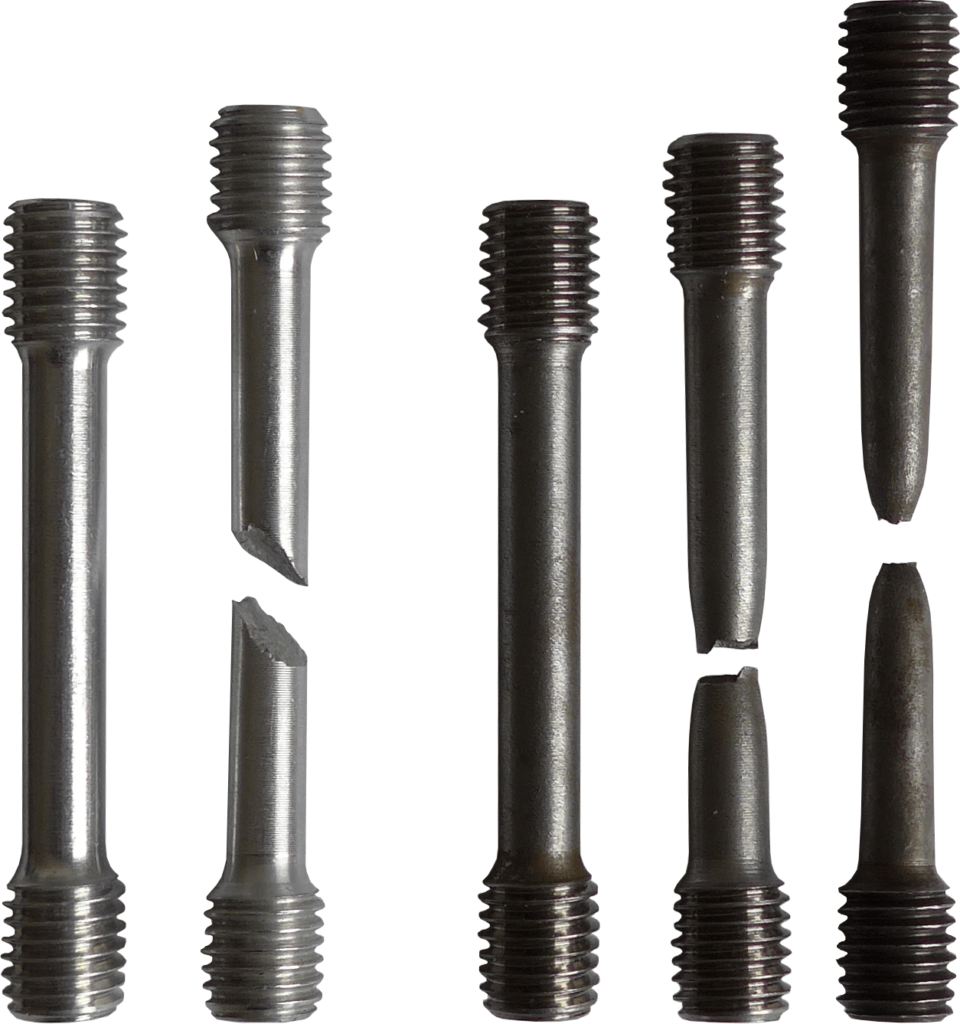Determine material properties by static tests.
In contrast to dynamischen Prüfung, static tests are performed at a quasi-static speed, in which samples are stretched, pressed or bent beyond the material limits. During these tests, the force-distance curve is recorded.
In our mechanical workshop, we manufacture the required samples from basic materials or components, either in accordance with standards or customer requirements.
The following characteristic values, among others, can be determined by means of these static tests:
- Tensile strength (material strength at break in a tensile test)
- Yield strength (start of irreversible plastic deformation, plastic limit)
- Elastic limit (reversible deformation)
- Young’s modulus
- Elongation at break (change in length)
- Constriction
- Shear stiffness (shear test)
- Bending stiffness (bending test)
- Time constant strength (time constant test)
tensile, compression and flexural testing
Standard test specimens or components are subjected to tensile, compression, shear or flexure loading. The force-displacement curve is recorded and evaluated.
hardness test
Standard test specimens or components are subjected to tensile, compression, shear or flexure loading. The force-displacement curve is recorded and evaluated.
time constant
In the time constant test, the material behavior at a constant test temperature after prolonged exposure to a constant force is determined.
Example applications for static tests
static tests for technical safety
Static tests are used wherever the properties of a material have an influence on functionality or technical safety.
Find out more about our expertise in the field of technical safety
You can find an overview of further methods in the field of technical safety in our Lexicon – Technical Security

